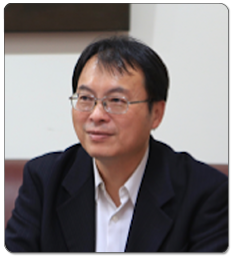9/11(Wed.) am9:00~12:00
Moderator

Deputy Director General, Water Resources Agency, MOEA
Yi-Fung Wang
Deputy Director Yi-Fung Wang received his Ph.D. degree in Civil Engineering at National Taiwan University. He was awarded by the Water Resource Agency as Outstanding Personnel in 2001 and by the Ministry of Economic Affairs as Model Civil Servant in 2010. Dr. Wang’s dedication in Water Resource Agency are respectable including development of science and technology in water resources, water conservation, water-saving policy, inundation warning system, and emergency response to drought.

Professor, Graduate Institute of Urban Planning, National Taipei University
Kuei-Hsien Liao
・ Associate Professor, Graduate Institute of Urban Planning, National Taipei University. August 2017 ~ August 2022
・ Visiting Fellow, Department of Architecture, National University of Singapore (NUS). January 2017 ~ May 2017.
・ Assistant Professor, School of Architecture, Chinese University of Hong Kong (CUHK).December 2013 ~ January 2017.
・ Other academic affiliations at CUHK: Urban Studies Programme; Center for Land Resources and Housing Policy, Institute of Future Cities
・ Assistant Professor, Department of Architecture, National University of Singapore (NUS).July 2012 ~ December 2013.
Keynote Speech

Associate Professor, Department of Bioenvironmental Systems Engineering, National Taiwan University
Li-Chi Chiang
Li-Chi Chiang's research focuses on watershed management, GIS applications, non-point source pollution, ecohydrology, ecosystem service evaluation, hydrological modeling, land use change, climate change adaptation, and field/lab experiments. She uses the SWAT model to simulate watershed responses and evaluate the impacts of land use and climate changes on water quality. She has contributed to the USDA's CEAP to assess BMPs for water quality and the USEPA's ESRP to study Midwest landscape changes' effects on ecosystem services. She has been actively conducting projects funded by Water Resources Agency, Irrigation Agency, National Science and Technology Council, and Ministry of Environment in Taiwan.
The title of speech
Evaluation of the impacts of natural disturbances and anthropogenic activities on river ecohydrology and water quality in multiple watersheds
Short abstract of speech
The inter-correlations among landscape structure and ecological process have great influences on the hydrological process, energy flow, and nutrient cycles. Moreover, sudden large disturbances (e.g., typhoons and earthquakes) can have a significant and immediate impact on landscapes and ecosystem services. In this study, we simulated multiple ecosystem services and biodiversity, and evaluated the relationship among landscape metrics and water quality in multiple watersheds.
The results suggest that a comprehensive ecosystem management plan should consider the cumulative impacts of disturbance regimes to prevent reductions in ecological variability and ecosystem resilience, particularly in areas that are more sensitive to large disturbances. Also, these findings could provide reference for developing an effective watershed planning and management with further investigations of landscape configuration at the class level.
Manager, Ecosystem Conservation Division, Japan Riverfront Research Center
Takayoshi Tsuzuki
Mr. Tsuzuki is the manager of the Ecosystem Conservation Division. He is dedicated to river ecological regeneration, river ecological surveys, and river environment construction.
The title of speech
Nature-oriented River creation underway in the Maruyama River
Short abstract of speech
This report will report on the river creation efforts being carried out on the Maruyama River to preserve, regenerate, and create a rich natural environment while taking into account flood control and water utilization functions.

Section Chief, Fifth River Management Branch, WRA, MOEA
Chia-Wei Wu
・ Junior Engineer
・ Associate Engineer
・ Engineer
・ Section Chief
The title of speech
Environment Creation Case Studies -“HooWave Resilient Township & Waterfront Landscape Project” &“Waisanding Sandbar Experiment Defense Project”
Short abstract of speech
“HooWave Resilient Township & Waterfront Landscape Project” &“Waisanding Sandbar Experiment Defense Project” It is a good example of ecologically friendly measures implemented by the Fifth River Branch of the Water Resources Agency in accordance with the "Ecological Inspection Precautions for Public Works"
Proposes the overall planning positioning and concept of the whole area, with four main objectives : integrating water network, linking ecology, stitching water and living fields, and activating attractive landscapes , to achieve a water environment that is flood-resistant, ecologically diverse, permeable and accessible, and has a humanistic atmosphere, the “HooWave Water Factory”. Based on the above concepts, the overall planning blueprint for the waterfront stitching framework and configuration is proposed.
In addition, as an erosion prevention and control strategy on Waisading Sandbar , permeable groins are used to change the characteristics of waves and nearshore flow fields along the coast, and oyster reefs are installed to block drifting sand along the coast. The multi-pores have positive benefits for underwater ecology.

Chief Researcher, Japan Riverfront Research Center
Yukio Miyagawa
Dr. Miyagawa is currently the Chief Researcher at River Rehabilitation Research Institute. He was awarded the "Technical Development Award" by the Japan Japan Society of Dam Engineers for the development of a riverbed environmental assessment method downstream of dams using a simplified prediction model for the exposure height of gravel.
The title of speech
Initiatives for river environmental database in Japan
Short abstract of speech
In Japan, surveys are conducted for the regular, continuous, and unified collection and maintenance of basic information on the natural environment of rivers. This survey is called the river census.
In 1990, a five-year survey was launched, and the results of the survey on fish, plants, birds, etc. were aggregated into a river environment database and available on the website. This presentation outlines the latest efforts in this survey and database.